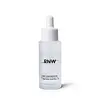What's inside
What's inside
 Key Ingredients
Key Ingredients

 Benefits
Benefits

 Concerns
Concerns

No concerns
 Ingredients Side-by-side
Ingredients Side-by-side

Water
Skin ConditioningButylene Glycol
HumectantGlycerin
Humectant1,2-Hexanediol
Skin ConditioningBetaine
HumectantPropanediol
SolventGlyceryl Glucoside
HumectantCarbomer
Emulsion StabilisingArginine
MaskingPEG-60 Hydrogenated Castor Oil
EmulsifyingPanthenol
Skin ConditioningEthylhexylglycerin
Skin ConditioningHydroxyethylcellulose
Emulsion StabilisingAllantoin
Skin ConditioningSodium Hyaluronate
HumectantBenzyl Glycol
SolventHouttuynia Cordata Extract
Skin ConditioningXylitylglucoside
HumectantHydrolyzed Glycosaminoglycans
HumectantParfum
MaskingAnhydroxylitol
HumectantDisodium EDTA
Centella Asiatica Extract
CleansingXylitol
HumectantSodium Hyaluronate Crosspolymer
HumectantLinalool
PerfumingGlucose
HumectantHydrolyzed Hyaluronic Acid
HumectantRaspberry Ketone
MaskingBenzyl Benzoate
AntimicrobialHydroxycitronellal
PerfumingHexyl Cinnamal
PerfumingLimonene
PerfumingHydroxypropyltrimonium Hyaluronate
Beta-Glucan
Skin ConditioningHyaluronic Acid
HumectantSodium Acetylated Hyaluronate
HumectantMadecassoside
AntioxidantMadecassic Acid
Skin ConditioningAsiaticoside
AntioxidantAsiatic Acid
Skin ConditioningWater, Butylene Glycol, Glycerin, 1,2-Hexanediol, Betaine, Propanediol, Glyceryl Glucoside, Carbomer, Arginine, PEG-60 Hydrogenated Castor Oil, Panthenol, Ethylhexylglycerin, Hydroxyethylcellulose, Allantoin, Sodium Hyaluronate, Benzyl Glycol, Houttuynia Cordata Extract, Xylitylglucoside, Hydrolyzed Glycosaminoglycans, Parfum, Anhydroxylitol, Disodium EDTA, Centella Asiatica Extract, Xylitol, Sodium Hyaluronate Crosspolymer, Linalool, Glucose, Hydrolyzed Hyaluronic Acid, Raspberry Ketone, Benzyl Benzoate, Hydroxycitronellal, Hexyl Cinnamal, Limonene, Hydroxypropyltrimonium Hyaluronate, Beta-Glucan, Hyaluronic Acid, Sodium Acetylated Hyaluronate, Madecassoside, Madecassic Acid, Asiaticoside, Asiatic Acid
Water
Skin ConditioningButylene Glycol
Humectant1,2-Hexanediol
Skin ConditioningHydroxypropyltrimonium Hyaluronate
Hydrolyzed Hyaluronic Acid
HumectantHydrolyzed Sodium Hyaluronate
Skin ConditioningSodium Hyaluronate
HumectantAcetyl Glucosamine
Skin ConditioningSalix Alba Bark Extract
AstringentGlycereth-25 PCA Isostearate
EmulsifyingDiethoxyethyl Succinate
SolventCaprylyl Glycol
EmollientAmmonium Acryloyldimethyltaurate/Vp Copolymer
Ethylhexylglycerin
Skin ConditioningSodium PCA
HumectantCitric Acid
BufferingPolyglutamic Acid
Skin ConditioningWater, Butylene Glycol, 1,2-Hexanediol, Hydroxypropyltrimonium Hyaluronate, Hydrolyzed Hyaluronic Acid, Hydrolyzed Sodium Hyaluronate, Sodium Hyaluronate, Acetyl Glucosamine, Salix Alba Bark Extract, Glycereth-25 PCA Isostearate, Diethoxyethyl Succinate, Caprylyl Glycol, Ammonium Acryloyldimethyltaurate/Vp Copolymer, Ethylhexylglycerin, Sodium PCA, Citric Acid, Polyglutamic Acid
Ingredients Explained
These ingredients are found in both products.
Ingredients higher up in an ingredient list are typically present in a larger amount.
1,2-Hexanediol is a synthetic liquid and another multi-functional powerhouse.
It is a:
- Humectant, drawing moisture into the skin
- Emollient, helping to soften skin
- Solvent, dispersing and stabilizing formulas
- Preservative booster, enhancing the antimicrobial activity of other preservatives
Butylene Glycol (or BG) is used within cosmetic products for a few different reasons:
Overall, Butylene Glycol is a safe and well-rounded ingredient that works well with other ingredients.
Though this ingredient works well with most skin types, some people with sensitive skin may experience a reaction such as allergic rashes, closed comedones, or itchiness.
Learn more about Butylene GlycolEthylhexylglycerin (we can't pronounce this either) is commonly used as a preservative and skin softener. It is derived from glyceryl.
You might see Ethylhexylglycerin often paired with other preservatives such as phenoxyethanol. Ethylhexylglycerin has been found to increase the effectiveness of these other preservatives.
Hydrolyzed Hyaluronic Acid is a form of hyaluronic acid. It is created by the hydrolysis of hyaluronic acid with a high molecular weight. Once created, Hydrolyzed Hyaluronic Acid has a low molecular weight.
Low molecular weight HA has been shown to hydrate and increase elasticity of the skin. Increasing elasticity is also associated with reduction of wrinkle depth.
One study found topical low molecular weight hyaluronic acid may be considered for the treatment of rosacea in the adult population. However, we always recommend speaking with a professional about your skin concerns.
Hyaluronic acids are a humectant. This means they draw moisture from the air. Hyaluronic acids help moisturize, soothe, and protect the skin.
Read more about other common forms of hyaluronic acid:
Learn more about Hydrolyzed Hyaluronic AcidThis form of hyaluronic acid is produced through fermentation.
According to a manufacturer, it has a positive charge by ionic binding to help moisturize and give hair a smooth feel. This is why you'll find this ingredient in shampoos and body washes.
Sodium Hyaluronate is hyaluronic acid's salt form. It is commonly derived from the sodium salt of hyaluronic acid.
Like hyaluronic acid, it is great at holding water and acts as a humectant. This makes it a great skin hydrating ingredient.
Sodium Hyaluronate is naturally occurring in our bodies and is mostly found in eye fluid and joints.
These are some other common types of Hyaluronic Acid:
Learn more about Sodium HyaluronateWater. It's the most common cosmetic ingredient of all. You'll usually see it at the top of ingredient lists, meaning that it makes up the largest part of the product.
So why is it so popular? Water most often acts as a solvent - this means that it helps dissolve other ingredients into the formulation.
You'll also recognize water as that liquid we all need to stay alive. If you see this, drink a glass of water. Stay hydrated!
Learn more about Water